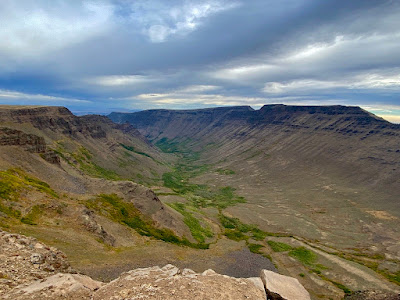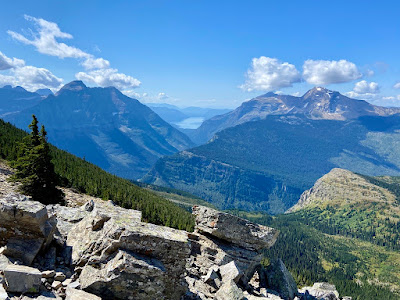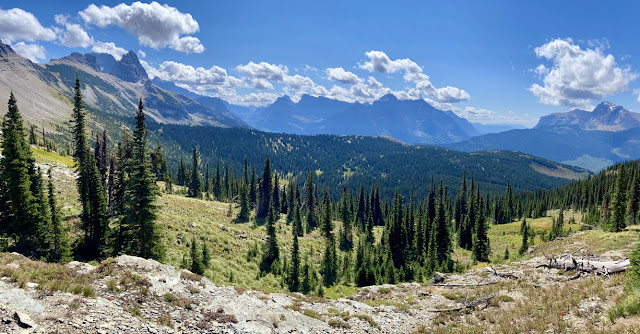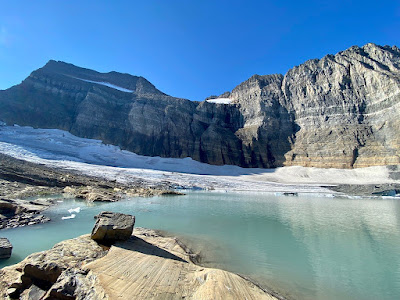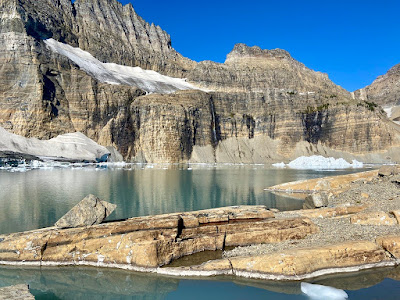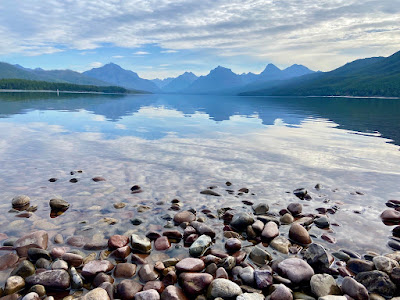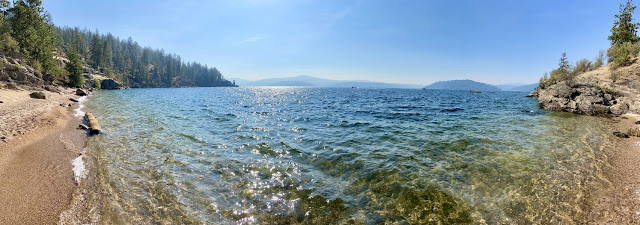Tom and I put one last summer trip on our calendar--a road trip to southeast Oregon. Growing up, Tom's family frequently travelled to Steens Mountain due to their familial historical connection. The Steens is located at the opposite corner of the state from Portland, about a seven-hour drive (not far from Nevada and Idaho). As removed from city life as can be, it is some of the most rugged and remote land left in Oregon. Therefore, it is a lesser-visited destination to hike and backpack. The rustic area encompasses acres of deep glacier-carved gorges, wilderness, and wild horses.


Wildhorse Lake fills the bottom of a deep cirque with surrounding walls on three sides that give way on to an expansive view of the Alvord Desert and horizon beyond. This treeless bowl is streaked with tiny creeks that flow only after there’s been rain.


Day 1: John Day
Tom and I set out on Thursday after work for a 5-hour drive to our hotel in John Day. After we left I-84, the landscape quickly transformed into the vast, high desert of eastern Oregon. The Journey Through Time Scenic Byway was marked by primitive surroundings, which felt like the wild west. It reminded me of parts of Colorado and Utah. Driving through this area during the golden hour, just before sunset, was simply stunning. Before long, we were driving towards the rising moon. In the future, I hope to visit the Painted Hills in John Day Fossil Beds National Monument.
Tom and I set out on Thursday after work for a 5-hour drive to our hotel in John Day. After we left I-84, the landscape quickly transformed into the vast, high desert of eastern Oregon. The Journey Through Time Scenic Byway was marked by primitive surroundings, which felt like the wild west. It reminded me of parts of Colorado and Utah. Driving through this area during the golden hour, just before sunset, was simply stunning. Before long, we were driving towards the rising moon. In the future, I hope to visit the Painted Hills in John Day Fossil Beds National Monument.
Day 2: Strawberry Wilderness
Strawberry Mountain is the highest point in the Strawberry Mountain Wilderness, which is part of the Blue Mountains range. This hike first passes through popular Strawberry Lake and then a waterfall. There's an optional detour to Little Strawberry Lake before the picturesque traverse up through meadows and white bark pines. The final ascent to the summit (9,038') switchbacks up a slope of loose shale. On a clear day, the unobstructed view extends for miles in all directions. Numerous habitats along the way offer summer wildflowers and wildlife, including mule deer and mountain goats. The hike from the Strawberry Basin Trailhead to the summit climbs 3,610' over 12.6 miles.
On Friday, Tom and I arrived at the trailhead around 11am. Unfortunately, it was the wrong trailhead for the hike described above; Strawberry Mountain instead of Strawberry Basin. We could still climb to Strawberry Mountain from there, but the route was shorter and less scenic. We made the best of it though, hiking almost 10 miles before returning to the car around 3pm. The weather was warm and sunny, but windy with haze and smoke. The area is an oasis in the high desert, but the surrounding forest has a history of wildfire damage. We encountered very few people, but swarms of butterflies! Next time, I would hike from Strawberry Basin earlier in the summer.
 |
| Fun fact: most of Oregon lies in the PST except for Malheur County, which is in the MST |
Afterwards, we drove south to our hotel in Burns. Tom's Dad and brother, Dominick, met us at Steens Mountain Brewery for a very fun night; the best small-town brewery!
Day 3: The Steens
On Saturday morning, the four of us drove two hours south to the Steens. Departing from Frenchglen, the 52-mile Steens Mountain Loop Road is the highest road in the state.
Kiger Gorger and East Rim overlooks are worth a stop.
From the Steens Mountain Summit Trailhead, the summit is less than 0.5-mile away at 9,734'. It felt good to be at elevation again! From the same trailhead, we hiked down to Wildhorse Lake. The 1.2-mile trek downhill (1,100' loss) crosses a field of lava rock. As the trail descends toward the lake, it becomes steep and loose in places.



We spent the day there, exploring side trails around the lake. The area normally experiences a hot, dry climate in the summer, but a cold front was quickly moving in with high winds up to 55 mph. We had planned to camp at the lake, but Tom's dad and I hiked out around 2pm and returned to the hotel in Burns, while Tom and Dominick toughed it out.
Day 4: Home
Reunited with boys, both cold and tired, I drove us 5 hours back to Portland on Sunday. My first taste of eastern Oregon was great. I am excited to return again for more exploration, perhaps in late July when the mountain peaks still have snow.





